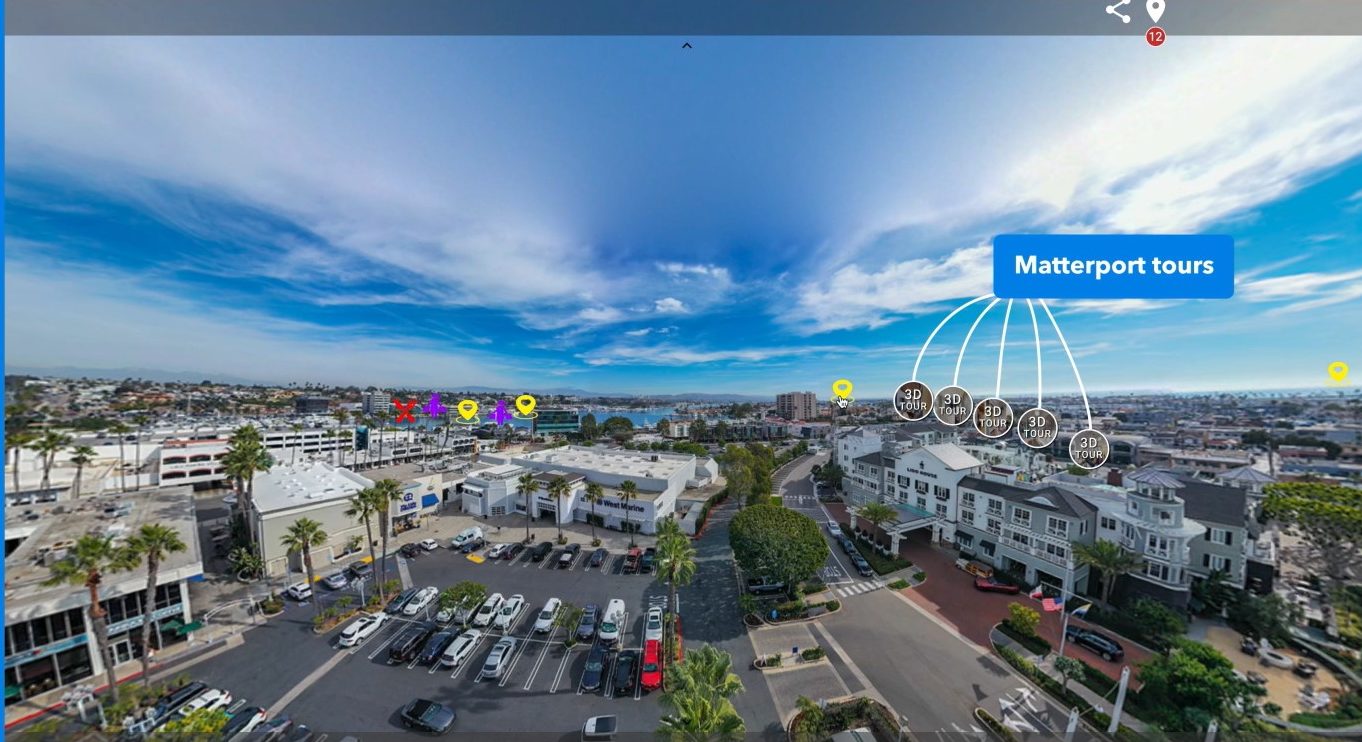3d integration
3D Integration: Revolutionizing Technology for Immersive Experiences
I. Introduction
In today’s fast-paced tech landscape, **3D integration** is changing the game—especially for professionals in photography and real estate.
If you’re using immersive platforms like www.threesixty.tours to create **360-degree virtual tours**, understanding this technology can help you stay ahead of the curve.
So, what is 3D integration? In simple terms, it’s the process of stacking electronic components—like processors, memory, and sensors—on top of each other instead of laying them out side by side.
This vertical stacking allows for more power, speed, and efficiency in a smaller space.
For creators who rely on compact, high-performance devices like **360-degree cameras** and **VR headsets**, 3D integration is a big deal.
It’s making devices faster, smaller, and smarter—perfect for creating immersive virtual experiences that captivate clients and boost engagement.
In this article, we’ll explore how 3D integration works, where it came from, and why it matters. Whether you’re a real estate agent showcasing properties or a photographer capturing immersive environments, this guide will help you understand how 3D integration enhances your tools and transforms your work.
II. Historical Overview of 3D Integration
The idea of stacking electronic components isn’t brand new. Engineers started playing with this concept back in the **1980s**, using multi-chip modules to improve performance and save space.
These early efforts were basic, but they laid the foundation for today’s advanced 3D integration.
In the **1990s** and early **2000s**, the industry took a big leap forward with the invention of **Through-Silicon Via (TSV)** technology.
TSVs create tiny vertical pathways through silicon chips, allowing data to move quickly between layers. This breakthrough made 3D stacking faster and more efficient.
By the mid-**2000s**, tech giants like **Intel**, **Samsung**, and **TSMC** were investing heavily in 3D integration.
This led to the development of high-performance memory technologies like **High Bandwidth Memory (HBM)** and **Hybrid Memory Cube (HMC)**.
These are now used in everything from gaming consoles to AI systems.
Fast forward to today, and 3D integration has evolved into something called **System-in-Package (SiP)**.
This means different types of chips—like processors, sensors, and memory—can be combined into one compact unit.
For example, **360-degree cameras** now use these systems to deliver better performance in smaller devices.
This evolution is especially important for users of platforms like www.threesixty.tours.
The tools you use to capture and share immersive experiences are built on decades of innovation in 3D integration.
As this technology continues to advance, expect even more powerful and compact devices to hit the market.
III. Components and Technologies Involved in 3D Integration
At the core of 3D integration are several key technologies that make stacking chips possible. One of the most important is **Through-Silicon Via (TSV)**.
These are vertical electrical connections that run through silicon chips, allowing fast communication between layers.
TSVs are a game-changer because they reduce the distance data has to travel. That means faster processing and lower power consumption—two things that are crucial for devices like **360-degree cameras** and **mobile VR headsets**.
Another essential technology is **wafer-level packaging**.
This includes **Fan-Out Wafer-Level Packaging (FOWLP)** and **2.5D integration using interposers**.
Interposers are special layers that connect different chips together. They help integrate processors, memory, and sensors into a single system.
The materials used in 3D integration also matter.
**Silicon** is still the go-to material for chips, but other materials like **copper** (for connections), **polymers** (for insulation), and advanced cooling materials are also used to boost performance and reliability.
There are different ways to stack the chips, including:
- **Die-to-wafer bonding**
- **Wafer-to-wafer bonding**
- **Die stacking**
Each has its pros and cons in terms of cost, flexibility, and manufacturing yield.
For professionals using www.threesixty.tours, these technologies directly impact the tools you use.
Cameras with 3D-stacked sensors can process images faster, deliver higher resolution, and operate longer on a single charge.
That means smoother virtual tours and better client experiences.
IV. Advantages and Challenges of 3D Integration
3D integration offers a ton of benefits, especially for compact and high-performance devices. One of the biggest perks is **speed**.
Because components are stacked vertically, data travels shorter distances. That means faster performance and lower latency—perfect for real-time image processing in **360-degree cameras**.
Another advantage is **size**.
Traditional 2D integration spreads components out, which takes up more space. 3D integration stacks them, saving space and allowing for smaller, more portable devices.
This is ideal for **drone-mounted cameras** or **handheld VR gear**.
**Power efficiency** is another win.
Shorter connections mean less energy is needed to move data. That translates to longer battery life—crucial for **real estate agents** conducting virtual tours on the go or photographers capturing large properties.
However, 3D integration isn’t without its challenges. One major issue is **heat**.
Stacking components increases heat density, which can affect performance. Engineers are developing advanced cooling materials and thermal management systems to solve this problem.
Manufacturing is also more complex.
Aligning and bonding multiple layers requires precision. This increases production costs and can lead to lower yields.
Testing and debugging stacked systems is also more difficult than with traditional 2D designs.
Despite these challenges, the benefits often outweigh the drawbacks.
As manufacturing techniques improve, these issues are becoming easier to manage. For users of www.threesixty.tours, this means better tools are on the horizon—faster, smaller, and more efficient than ever before.
V. Applications of 3D Integration
3D integration is already making waves across multiple industries. In **consumer electronics**, it powers **smartphones**, **tablets**, and **VR headsets**.
These devices rely on compact, high-performance chips that handle tasks like **image processing**, **AI**, and **real-time rendering**.
For example, **360-degree cameras** use stacked image sensors that combine sensing and processing in one unit.
This improves speed, resolution, and overall performance—crucial for creating immersive virtual tours.
In **real estate**, virtual tours are becoming a must-have for showcasing properties.
Devices that capture and process **360-degree images** are getting smaller and smarter thanks to 3D integration.
This allows agents to create more engaging experiences that help close deals faster.
**Healthcare** is another area where 3D integration is making a difference.
Mini medical devices like **endoscopes** and **wearables** use stacked chips to deliver real-time data in tiny packages.
While not directly related to virtual tours, these innovations show how versatile and powerful 3D integration can be.
Companies like **Sony** and **Samsung** have already released stacked image sensors that outperform older models.
These sensors are used in many of the cameras that power today’s virtual tour platforms.
**Apple’s A-series chips** also use 3D integration to boost performance and battery life.
Looking ahead, the future of 3D integration includes exciting developments like **neuromorphic computing** and **AI accelerators**.
These could lead to virtual tours that adapt in real time to user preferences—offering a more personalized and engaging experience.
To learn how these innovations are already being used in real estate and photography, check out this article from **IEEE Spectrum** on the future of 3D chip integration: https://spectrum.ieee.org/3d-chip-integration.
For users of www.threesixty.tours, this means your tools are only going to get better.
Expect faster cameras, smarter software, and more immersive storytelling capabilities.
VI. Conclusion
3D integration isn’t just a buzzword—it’s a foundational technology that’s reshaping how electronic devices are built and used.
From its early beginnings in the **1980s** to today’s cutting-edge applications, 3D integration has come a long way.
For photographers and real estate agents using platforms like www.threesixty.tours, understanding this technology is more than just tech talk.
It’s about knowing what powers your tools and what innovations are coming next.
The benefits are clear: faster performance, smaller devices, and better power efficiency.
While challenges like heat and manufacturing complexity still exist, ongoing research is solving these problems.
The result? More powerful, accessible tools for immersive content creation.
As 3D integration continues to evolve, it will unlock new possibilities in digital storytelling.
Whether it’s **AI-enhanced virtual tours** or ultra-compact **360-degree cameras**, the future is bright.
If you want to stay ahead in your industry, now’s the time to embrace this technology.
Visit www.threesixty.tours to see how today’s tools are already leveraging 3D integration—and imagine what’s next.
For a deeper dive into how 3D integration is transforming imaging technology, check out this research paper from **Nature Electronics**: https://www.nature.com/articles/s41928-021-00609-1.
Stay curious. Stay informed. And stay ready for what’s next.


